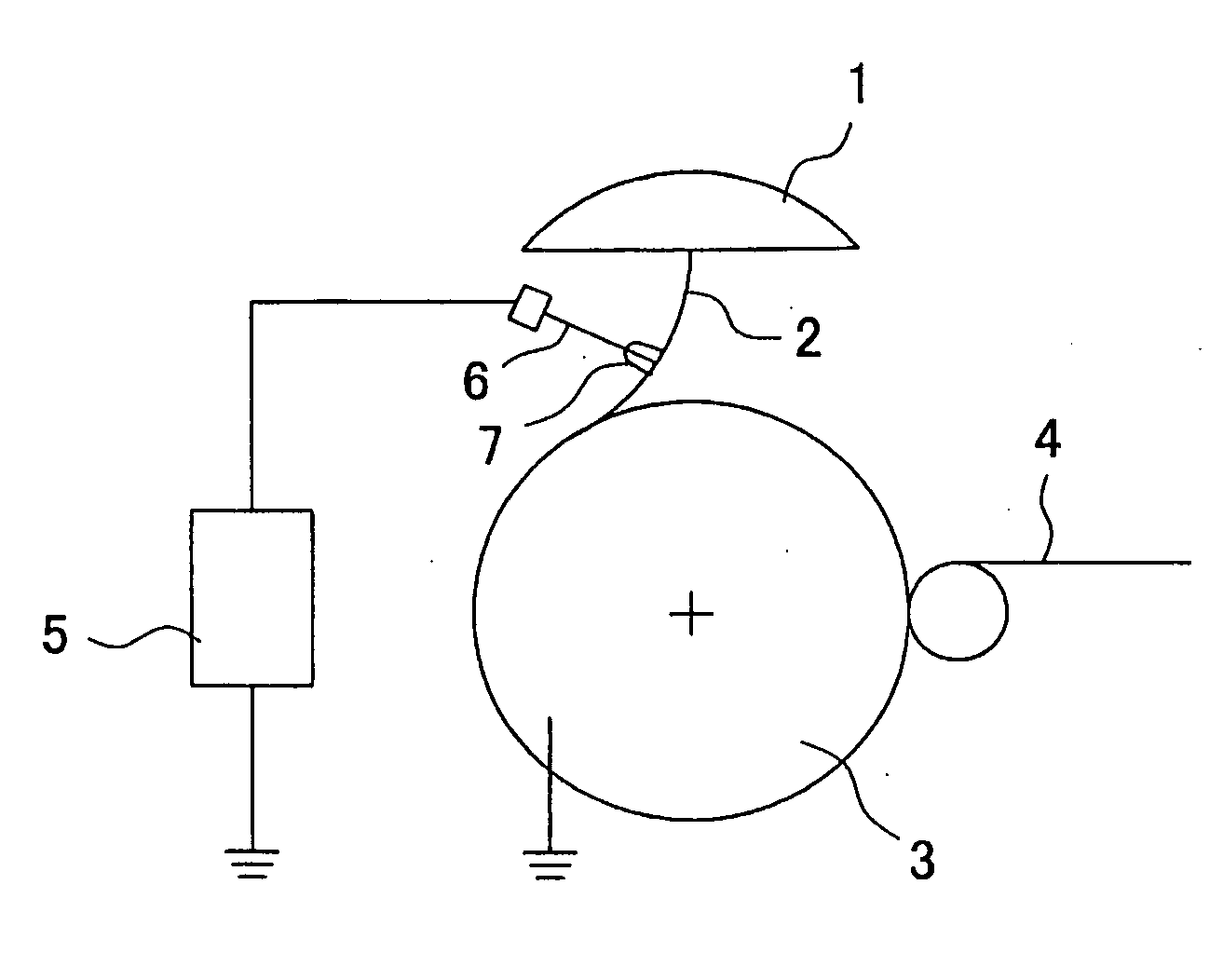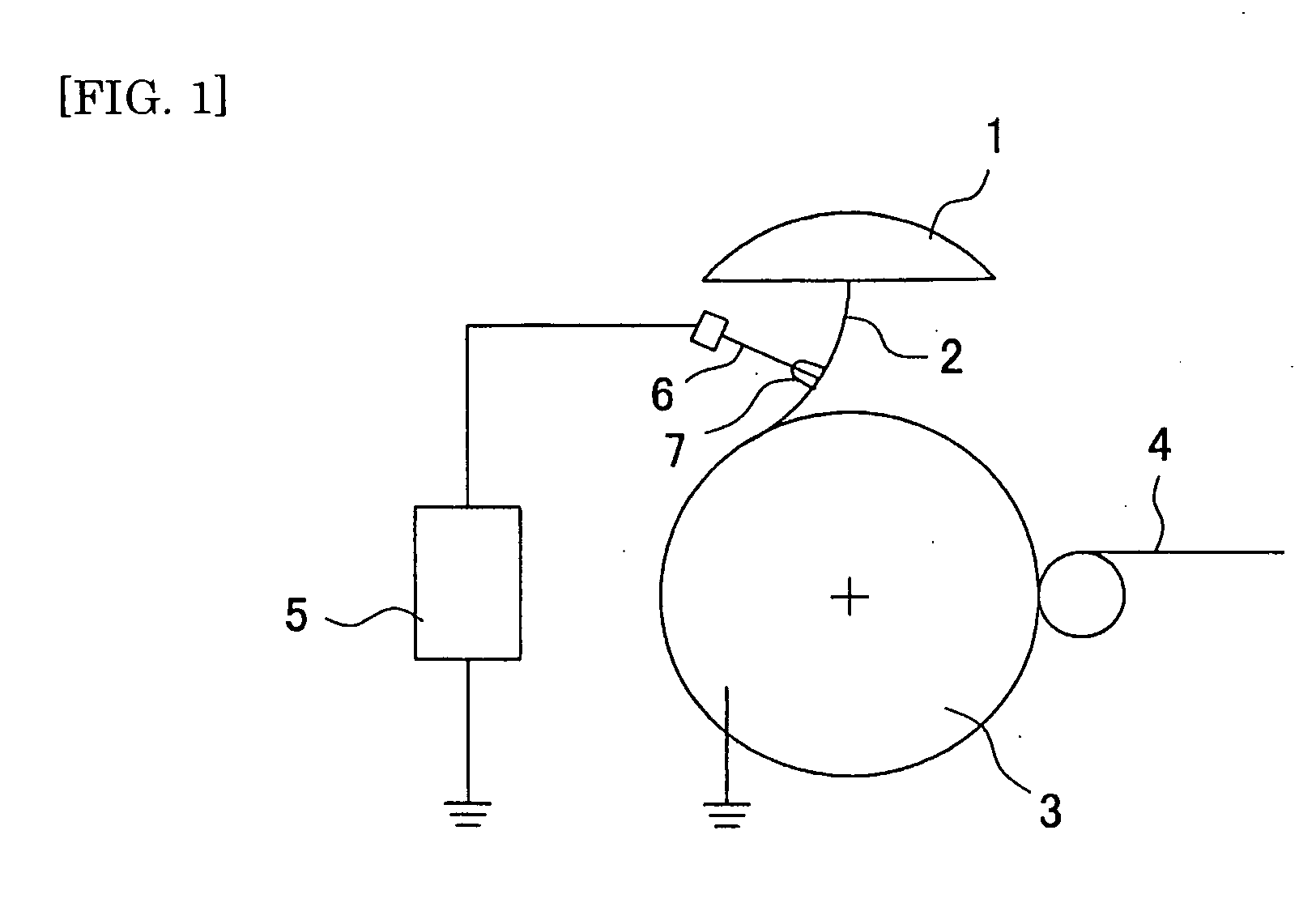Process for Producing Polyamide Based Resin Laminated Film Roll
a technology of polyamide and resin, applied in the direction of electrical heating, electrical apparatus, etc., can solve the problems of delayed cooling of melted sheets, increased sheet thickness, and inability to close contact with static electricity, etc., to achieve excellent transparency, uniform thickness, and low crystallinity.
- Summary
- Abstract
- Description
- Claims
- Application Information
AI Technical Summary
Benefits of technology
Problems solved by technology
Method used
Image
Examples
example 1
[0129]By using co-extrusion, from three extruders (Extruders No. 1 through No. 3), polyamide based resin was melt-extruded (laminated in a die and extruded), wrapped around a rotating metal roll cooled to 17° C. and rapidly cooled, and an unstretched film (polyamide based resin laminated sheet) in a thick of 257 μm and of two-types three-layer structure was obtained. The method of forming each layer of unstretched film (process up to melt-extrusion) is described as follows. Additionally, in the following description, the laminated layers are called a first layer, a second layer, and a third layer successively from the surface layer (that is, the surface of the third layer is the contact surface of the metal roll).
[0130]Formation of the First Layer (Outer Layer)
[0131]The above-described chips A and C were separately pre-dried while heating at about 120° C. for about 8.0 hours using a blender apparatus of 15 kl. Each chip was sampled from the blender by a predetermined amount and its ...
example 2
[0161]A polyamide based laminated resin film roll was obtained in the same manner as in the case of Example 1, except for changing the winding-up speed of the melted sheet to 75 m / min and the thermal fixation temperature after biaxial stretching to about 216° C. Then, the characteristics of the obtained film roll was evaluated in the method same as that of Example 1. Table 5 through 8 show the evaluation results.
example 3
[0162]When chips A and C in each blender were supplied to a hopper just above the extruder No. 1 as well as the extruder No. 3 in forming the first layer and the third layer, the amount supplied of chip A was set as 99.0% by weight and the amount supplied of chip C was 1.0% by weight, and at the same time, when chips A and C in each blender to a hopper just above the extruder No. 2 in forming the second layer, the amount supplied of chip A was set as 99.94% by weight and the amount supplied of chip C was set as 0.06% by weight. Except for these, all other conditions were same as those of Example 1 and a polyamide based resin laminated film roll was obtained Then, the characteristics of the obtained film roll were evaluated by the method same as that of Example 1. Tables 5 through 8 show the evaluation results.
PUM
| Property | Measurement | Unit |
|---|---|---|
| Temperature | aaaaa | aaaaa |
| Temperature | aaaaa | aaaaa |
| Temperature | aaaaa | aaaaa |
Abstract
Description
Claims
Application Information
 Login to View More
Login to View More - R&D
- Intellectual Property
- Life Sciences
- Materials
- Tech Scout
- Unparalleled Data Quality
- Higher Quality Content
- 60% Fewer Hallucinations
Browse by: Latest US Patents, China's latest patents, Technical Efficacy Thesaurus, Application Domain, Technology Topic, Popular Technical Reports.
© 2025 PatSnap. All rights reserved.Legal|Privacy policy|Modern Slavery Act Transparency Statement|Sitemap|About US| Contact US: help@patsnap.com


